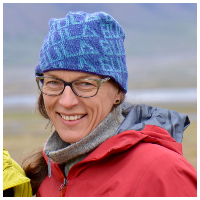26th May 2021, 4 pm Europe (CEST)
As the evidence of the climate and biodiversity crisis are accumulating, it is uncontroversial that human activities pose an urgent threat to biodiversity and ecosystem functioning across the globe. However, we often fail to acknowledge that significant components of the biodiversity and ecosystems that we value, depend on, and struggle to conserve and restore are also partly shaped by human imprints. This leads to a suite of missed opportunities versus understanding of the evolution and ecology of these systems, lack of our knowledge for nature management and restoration, and depriving people of opportunities to connect with and relate to nature.
The coastal heathlands of North-West Europe have been continuously managed by traditional low-intensity burning and grazing for up to 6000 years. Understanding the ecology and evolutionary biology of the heathlands requires understanding of how the interplay between natural and anthropogenic forcing has shaped heathland ecosystems and their flora and fauna on long timescales. Combining palaeoecological reconstructions, macroecology, community ecology, field experiments, ecosystems ecology, functional ecology, ecosphysiology, and fire science; we find that grazing and prescribed burning significantly shapes heathland biodiversity, ecology, and ecosystem functioning. In particular, we demonstrate that human-driven fire-regimes have triggered evolution of smoke-responsive seed germination in the keystone species Calluna vulgaris. Such evolutionary imprints of (pre)historic anthropogenic impacts are under-studied, and more research is urgently needed. Coastal heathlands thus illustrate how taking into account the longer-term human imprints on ecosystems can facilitate ecological and evolutionary understanding of these systems, inform management and restoration, and afford people a broader range of ways in which to connect with and relate to nature. This broad knowledge base is urgently needed to inform decision-making as heathlands are facing pressures and discussion over trade-offs between different land-use and management options to meet the climate and biodiversity crisis.
Facilitators: Victor Mario Tapia & Judith Kirschner

